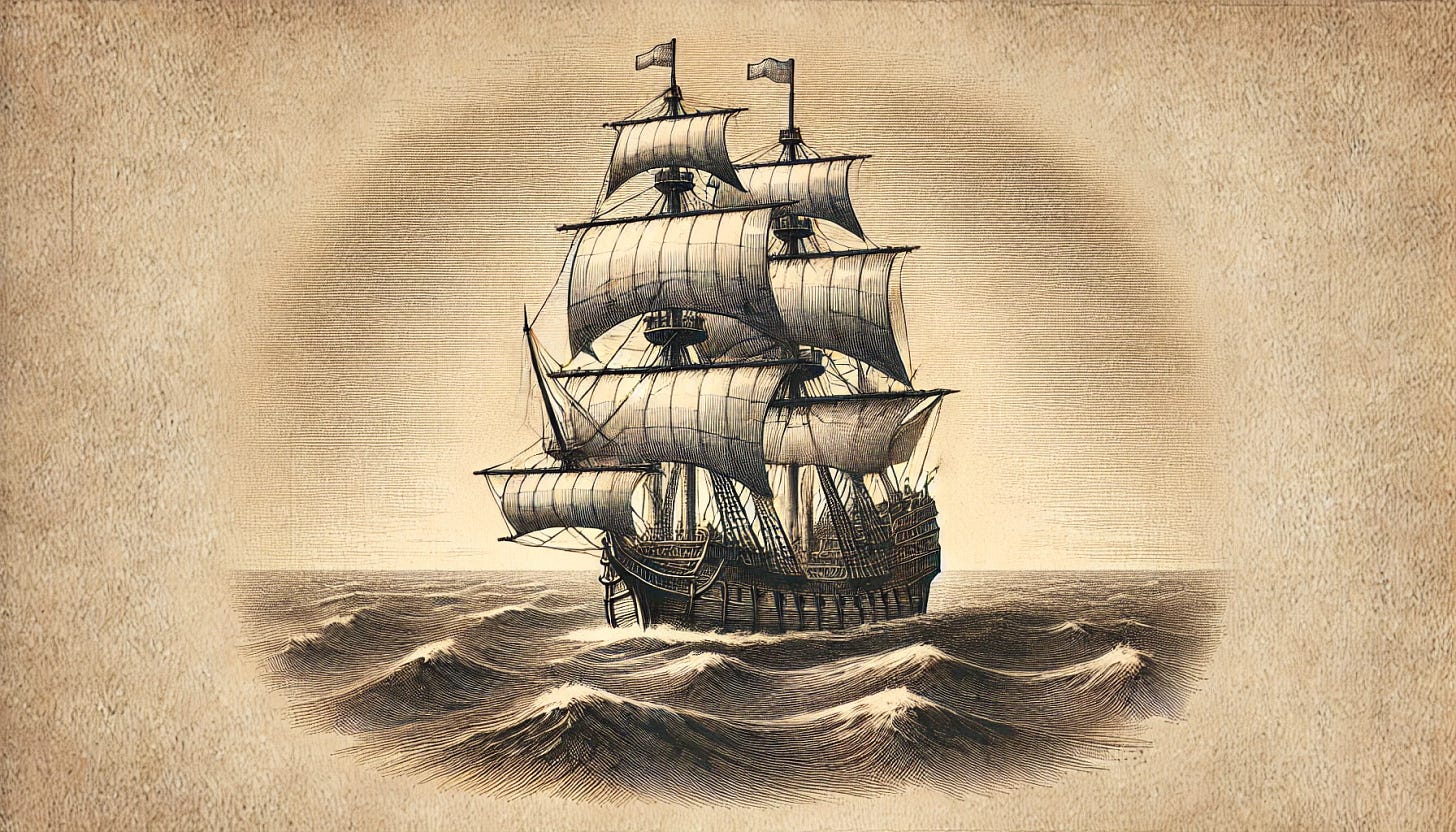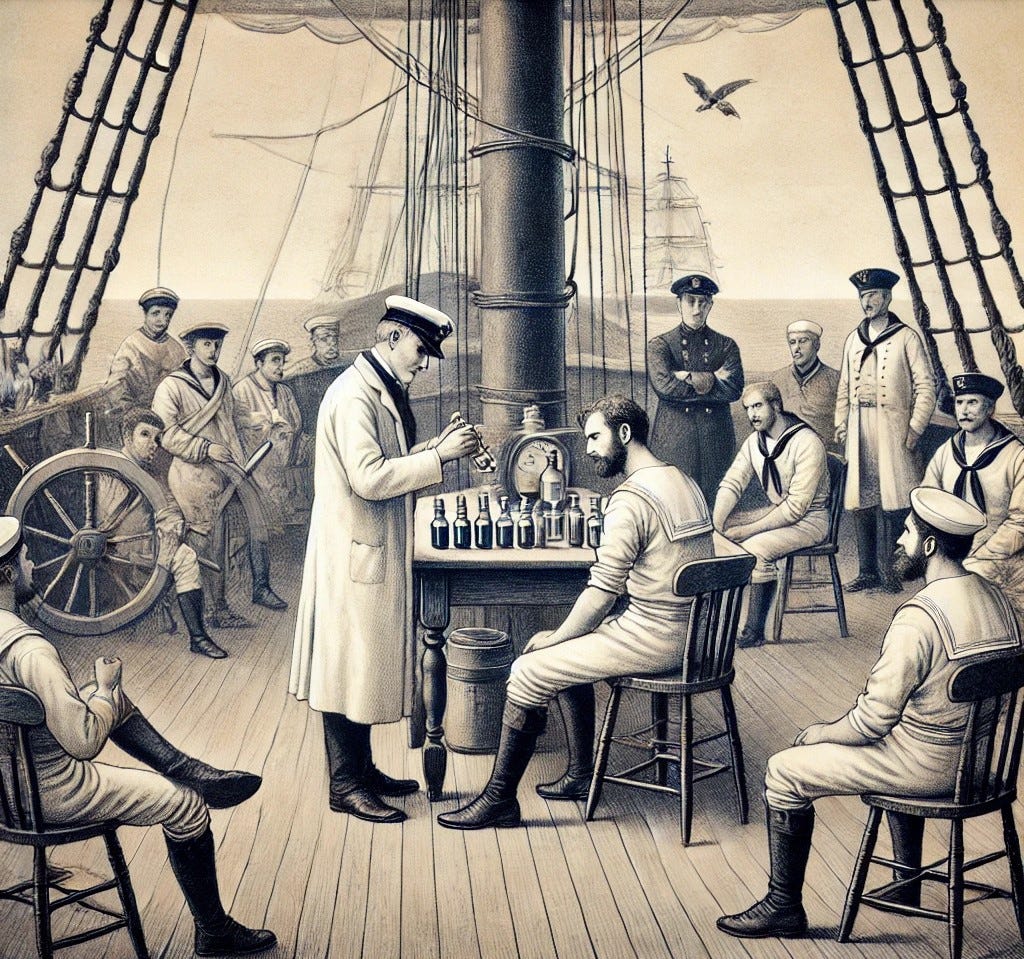Explorers of the ancient world would often go surprisingly far. One of my favorite examples of this is from the Phoenicians, who traveled from what is now Lebanon, Syria, and northern Israel in order to reach the British Isles some 2400 years ago.
Then, there’s the Egyptian Pharoah Necho II, who commissioned a group of Phoenician explorers to circumnavigate the continent of Africa. These navigators were the best in the world at the time as far as we know today, and it’s fair to say that they really got around. This account was written down by the Greek historian Herodotus, and while its accuracy is debated among scholars, there’s no doubt that these elite explorers were fully capable of traveling vast distances.
The Greeks, too, had their share of ancient navigators. There was Eudoxus of Cyzicus, a Greek navigator who sailed from Egypt to India, going all the way around the big subcontinent and opening up all sorts of new trade routes. Pytheas of Massalia sailed from modern-day Marseille around the British Isles, potentially even reaching Iceland or Norway on the other side (The Land of Thule). He might have even entered the arctic circle.
All of these ancient voyages are impressive, but they all share something else in common: all of these ships hugged the coastline. That meant that they could stop periodically for supplies, staying relatively healthy during those long voyages by taking frequent breaks on land.
Even by the time of Zheng He, during the early 15th century CE, fantastic voyages of exploration stayed close to the coast. In spite of having dozens of enormous ships—seriously, you could fit the Nina, Pinta, and Santa Maria inside of one of Zheng He’s enormous floating cities—they still hugged the coastline of Africa as they traveled south.
It wasn’t until those Europeans started going right across the ocean, without stopping on the coast every few days or so, that scurvy became a widely recognized problem.
It was bad enough if people died on an expedition, but if you were an investor, you really didn’t want to lose your shirt, so you wanted people to arrive safely. This meant eventual testing with scientific rigor (and with good funding behind it), for people wanted to know why their investments weren’t working out.
If this sounds a bit cynical, that’s because pre-Enlightenment European values were very, very different than they are today. Economic motivations often overshadowed concerns about human rights, to say the least.
Ideas had yet to coalesce around things like the consent of the governed and other human rights, and coffee houses where there thoughts would be shaped into action items were still a couple of centuries away.
And even though joint stock companies were also yet to arrive, profit and adventure were front and center on the minds of the wealthy. The bubonic plague had just devastated around a third of Europe, so there was a lot more power going to the people. The rich nobility felt naturally threatened by their loss of relative wealth and power, so they wanted to reclaim some of that status.
So, really rich individuals and very small groups of very wealthy folks sent ships out to explore the world, and for the first time in European history, these ships would not hug the coastline. Instead, with Columbus in the vanguard, Portuguese, Spanish, and Italian explorers began crossing the Atlantic ocean.
Unlike the previous coast-hoppers, these voyages might last several months with no hope for additional provisions. That’s why scurvy came to be viewed as such a big problem, and that’s why James Lind conducted the first ever clinical trial in 1747.
Lind was a Scottish naval surgeon, so he knew a thing or two about the challenges sailors faced. He also knew a bit about the scientific method, so he understood how important it was to test one variable at a time.
To do this, he picked 12 sailors who were all suffering from scurvy, and he made sure everything about them was as similar as possible: age, diet, symptoms. He then split them into six groups of two sailors each, and he gave each group different supplements every day.
One group was given cider, while another was given a concoction with garlic and mustard seed in it, among other things. One group got vinegar, another got saltwater, and yet another group was given vitriol (diluted sulfuric acid). The last group of two was given two oranges and one lemon.
Now, I don’t know about you, but I know which group I’d hope to be in… and it turns out that the most palatable things to consume were also the most effective at helping sailors recover from scurvy: the oranges and the lemon. It wasn’t even close, either: none of the other sailors recovered at all.
This might be a good time to talk about what scurvy is. Today, we know full well that scurvy is caused by a deficiency in Vitamin C (ascorbic acid), and we know that citrus fruits contain loads of Vitamin C. Scurvy, then, is just a lack of enough Vitamin C.
Without this essential nutrient, your body can’t produce collagen, which is a protein that helps you maintain connective tissues in your body. These connective tissues are everywhere inside you—between bones, in your skin, and even in your blood vessels.
Having scurvy means experiencing a breakdown of these tissues all over your body. Fatigue, weakness, and joint pain will often set in after about a month at sea. Bleeding gums and loose teeth combine with dry, rough skin that easily bleeds to create a feeling of malaise that can lead to serious depression.
If untreated, sailors would eventually die of scurvy.
So, when James Lind saw that citrus fruits could prevent much of this misery, he spread the word as rapidly as he could. Unfortunately, it took decades for his observations to be understood and believed. Information traveled very slowly back then, and very few people understood how to run their own clinical trials.
Eventually, though, British sailors were all given a ration of lime juice, which did the trick just as well as fresh citrus fruits, but could travel much better. This became a distinct feature of the British navy, who were among the first in the world to adopt this policy.
Naturally, the sailors came to be called limeys.
So, it was the ability to take those voyages on the open sea, not needing to hug the coastline, that ultimately inspired clinical trials, which today are a part of a process that saves billions of lives and improves the quality of life for many others.
Of course, every rule needs at least one exception. Here, the ancient Polynesian explorers provide us with a wonderful counterexample of explorers out there on the open sea, long before the European Age of Exploration began.
These amazing explorers sailed thousands of miles across the Pacific Ocean with no modern navigation tools. With their wits alone, they figured out how to travel vast distances from island to island. I wrote about them and their even more ancient seafaring ancestors here, and if you have time today, maybe you can read this next:








So my affinity for gin and tonic with lemon is proof that I care about my health and maintain my collagen levels? Take that, "We need to talk about your alcohol problem, Daniel."
I recently had shingles and scurvy at the same time! My doctor asked me if I was a pirate!